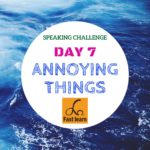Cars and Driving
1. What are the advantages of owning a car?
There are plenty of benefits of the car one can name. First, the car is a weather-proof means of transport, so it can protect people from extreme weather like the scorching sun (nắng như thiêu), hails (mưa đá), torrential rain, (mưa xối xả) or winter freezing gusts of winds (từng cơn gió lạnh cóng) and snows. Second, it ensures more road safety than other smaller means of transport like bicycles and motorbikes. Obviously, the strong steel frame is a protective cage for passengers in case of collision (sự va chạm) while the airbags prevent damages for their heads. Third, the car can accommodate the whole family of four or seven people, thus making family trips easier than motorbikes and more comfortable than public transport. Fourth, for developing countries, owning a car is considered as having a valuable property, which adds into higher chances for people to attain a tourist visa to developed countries. Fifth, also it applies for developing and underdeveloped countries that car ownership sometimes is used as a badge of social status (địa vị xã hội) and success that help business people gain trust in their business partners and staff. Let’s imagine the arrival of a CEO by car and by bike, who is more trustworthy for you to sign a business contract with? That is why even though some hasn’t got their car, they still hire a luxurious one to go to important business meetings.
2. What are the disadvantages of owning a car?
The nuisances (sụ phiền toái) of car ownership is also abundant. (nhiều) First, people need to have a space for a garage to keep the car at home, unless they have to drive to the nearby parking lot and manage to get home on foot or other means of transport. However, affording a garage at home is a dream of millions of people in the city where they have to cram (nhồi nhét) their families into small houses that fail any plan for building the basement for the car. Second, car ownership is a great problem for people in no traffic zones because they cannot drive their vehicles home but have to leave them quite far outside the center of town or city. Third, driving a car in rush hours is no less than a nightmare, breaking any limit of self-restraint (tự kiềm chế) to drive people frustrated. At such time, car drivers would wish they could abandon their cars and walk home or simply just had a toilet break amid those waiting hours at jammed traffic bottlenecks. (nút thắt giao thông)
3. Have you ever been in a car accident?
No,in the inner city, I only travel by motorbikes, or taxis, and for long haul drives, I take the bus, but so far luckily I have not been in any traffic tragedies. (thảm cảnh)
4. Have you ever been pulled over by the police?
A couple of time I went on the wrong lane and had my headlight broken. I was stopped and given the tickets. For such cases, I knew my mistakes, so without any further explanation, I just requested my ticket so that I could go to the treasury (kho bạc) and pay my fine to get back my driver’s license the next working day.
5. Are the drivers in your area where you live good drivers?
I doubt it, especially women drivers. I have not heard much of accidents caused by women motorists, but for female riders of motorbikes, the testimonies (chứng cứ) gainst them are bountiful (nhiều) and widely acknowledged. I don’t mean to discriminate genders in driving, but I experienced cases of unpredictable bike control by women quite a number of times, which has urged me to develop a mechanism of self-defense (cơ chế tự vệ) whenever I see women on the bikes.
If you live in Vietnam, you will hear stories of Ninja Lead, who wear eye- high facial masks and ride their Lead motorbikes to cause a series of accidents due to poor control of their bikes. I am not sure what makes them turn without the signals (đèn hiệu rẽ trái, phải) on or even with the turning signals but on the wrong side. I’ve seen so many women riders on the street with such unpredictable movements that I develop a precaution (đề phòng) to always watch out with total concentration if women are riding ahead. How can you avoid someone if they have the turning signal on the left, and suddenly makes a right turning? The second case I am afraid of in traffic is old people on the bikes. It is also because of the unpredictability of these riders that makes me scared.
6. Do you know anything about repairing or maintaining a car?
A car needs to have periodical maintenance,(bảo dưỡng định kì) so some tasks like oil changes, coolant refill, (châm nước giải nhiệt) tyre replacement, light check, brake checks need to be looked into. However, for high-end and high-tech cars like some versions of Mercedes, the maintenance and repair prompts (lời nhắc) will be displayed to the drivers thanks to the information from many sensors (cảm ứng) installed in the cars. Therefore, those cars themselves will point out what need to be done for their top safety and operational efficiency (hiệu quả vận hành)
7. What kind of car do you prefer?
I prefer a seven-seater (xe 7 chỗ) which has a great ground clearance (gầm cao) because I want to drive my family to places and I need the car to run on quite rough terrain (địa hình gồ ghề) to suit bumpy roads (đường gập ghềnh) and flooded streets in Vietnam.
8. Do you like to drive at night?
No I don’t. The glare (ánh sang chói) of the headlight of the cars running opposite can blind me and put me to hazards (nguy hiểm). There are glasses for night drives, but I am short-sighted and cannot wear two glasses at the same time. Also, I am not sure if such glasses can be customized for me or not. However, whatever aids I may have, the vision at night is still impaired (hạn chế) a lot, and that’s why I don’t like driving after sunset.
9. Do you think cars should be banned from city centers?
I really think there should be a ban on cars in the downtown of megacities (thành phố từ 10 triệu dân trở lên) on one condition: the public transport system is adequately developed with options like the underground or the train and the bus. This not only eases (giảm tải) the traffic load on small streets in the city center but also reduce the toxic exhaust fumes (khí thải độc hại) in the atmosphere where millions of people live and work. As for smaller cities, the ban is unnecessary because traffic congestion (kẹt xe) is less severe and the number of vehicles is not too high to make it essential to establish a no-traffic zone. (khu vực cấm xe hơi)
10. What side of the road do you drive in your country?
We drive on the right. I guess this traffic law has been practiced since the French and American colonial time (thời thuộc địa) because they were the one bringing cars into Vietnam.
11. Is drunk driving a problem in your country?
It is an afflicting problem (vấn đề nhức nhối) especially when holidays come. When people have days off, gathering and drinking is common in Vietnam. That’s why driving while intoxicated (lái xe khi đang say) is sadly quite common, and this contributes a significant part into the traffic death toll (chết vì tai nạn giao thông) and hospital overload (quá tải bệnh viện) on holidays. Therefore, people have to take extra precaution (cảnh giác cao) whenever they hit the road (chạy xe ra đường) on holidays.
I think this problem remains severe because there is no such rule as double demerits (phạt gấp đôi) or no such system as traffic cameras in place to watch motorists. When there is a lax law enforcement, (hành pháp lỏng lẻo) we cannot expect to have law abidingness. (sự tôn trọng pháp luật)
12. What kind of laws does your country have about drunk driving?
If motorists commit drunk driving, they will be fined from 100 USD to 800 USD depending on the level of alcohol intoxication measured by the Breathalyzer (nồng độ cồn trong hơi thở đo bằng máy thử) or blood alcohol concentration (nồng độ cồn trong máu). Besides, depending on the attitudes of the traffic violators, their licenses can be confiscated (bị tịch thu) for up to 6 months. In case they cause accidents, criminal law (luật hình sự) will be used in the prosecution (tố tụng) against the drunk drivers, and if necessary, it will resort to imprisonment (viện đến, dùng đến án tù).
13. Is jaywalking legal in your country? Do people often jaywalk in your country?
Every pedestrian knows that they should walk on the pavement and only cross the streets at zebra crossings, and that if they do not follow these laws, they have to bear all costs of traffic accidents. However, whenever there is a traffic accident, it is the bigger vehicles that are usually blamed for fast driving, not the pedestrian who may be jaywalking. (đi bộ sai luật)
As for the habit of jay walking, you can find it multiple times on a street in the city center. The smaller the street and the slower the traffic, the more jaywalking.
14. What is the longest trip you have ever taken by car?
I still remember the 30-hour trip I took to my mom’s hometown in a Northern province of Vietnam. Worse than that, the bus broke down many times on the way and forced us to have unwanted breaks on the way. Can you imagine the smelly bus packed with people sleepless for 30 hours without any shower? It is so horrible that I promised to myself that I would never take long haul bus rides (xe đò đường dài) anymore.
15. Have you ever broken down and been stranded on the side of the road?
Never have I been in such a situation where I am stranded (bị bỏ rơi giữa nơi vắng vẻ) on the road side. However, it is still not scary if I were in that circumstance because in Vietnam, the national highway runs through residential areas, so help is almost everywhere. It is unlike the highway in Australia or America where being left stranded and having no helpline number or suffering phone problems can mean you are helplessly standing in the wild at a point which is dozens of kilometers away from the nearest residential area. Isn’t it scary? But that is just in developed countries where interstate (liên bang) highways or freeways cut through the wild or the outback, (vùng nông thôn) not in Vietnam.
16. What are the speed limits in your country?
On highways, cars and bus are allowed to run at 60-120 km/h. In the city center, 30-40 km is the top speed allowed. On boulevards in the city, 60 km/h is the top speed for cars.
17. On what occasions do you honk your car horn?
I honk the horn (bóp còi) when I see someone is riding a motorbike but busying his hands with the cellphone. Another the situation that prompts me to honk the horn is to alert the driver ahead that I am asking to pass and that I will pass him or her soon. That’s it. I will restrain myself from honking the horn in the traffic slowdown because I know that will just frustrate people and does not help to speed the traffic up at all.
18. Are men better drivers than women?
No doubt, in general, men are better than women in shifting the gears, understanding and controlling mechanical processes (quá trình cơ khí) in the car, and having more nerves of steel (tinh thần thép) in reacting to unexpected traffic incidents. That’s why for long haul drives, men are usually behind the wheel. (lái xe)
19. Do you think the age for driving should be raised or lowered?
I think that the age for driving should be equivalent to the age for legal marriage. At that age people are considered responsible enough for their lives and other people’s lives; therefore, they can be responsible and careful drivers who think enough for themselves and for fellow motorists. (người cùng tham gia giao thông)
20. Do you think driving lessons should be provided by high schools?
Why not? If it is something everyone needs to know, the sooner it is introduced, the better knowledge of driving people are equipped with. That also gives plenty of time for traffic laws to be acquired at school and consolidated on the street from the passengers’ seat of the youngsters. That early education of traffic law gives enough time for such a spirit as top priority for road safety in giving ways and avoiding collisions to be cultivated in children and developed into an integral part of their traffic awareness. That is much better than packing those rules and principles into books of traffic laws that adults take hours and hours cramming (nhồi nhét) for the driving test.














